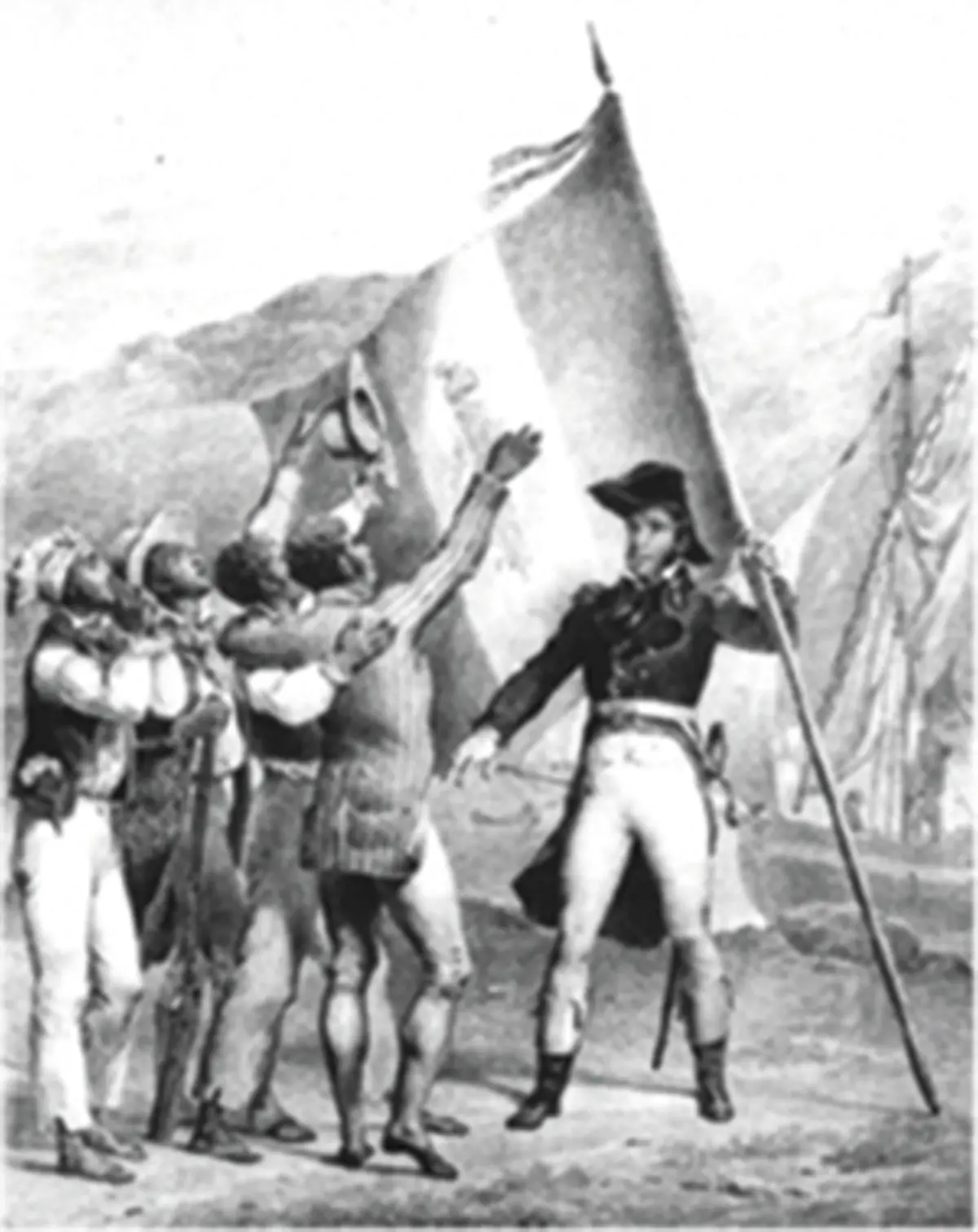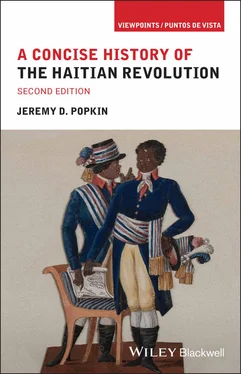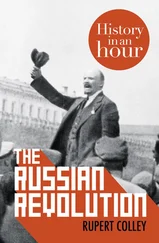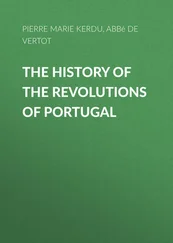While the whites in Saint-Domingue disputed among themselves in 1789 and 1790, other parts of the colony’s population were also recognizing that the revolution in France might change their lives. How much the enslaved black population heard about the revolution and how they interpreted the news is hard to measure. Despite the ban on French newspapers, reports about events there circulated widely in the colony, and some blacks undoubtedly heard their masters using the new language of freedom and natural rights. In October 1789, Julien Raimond’s brother told him that blacks had heard that the red, white, and blue cockade or ribbon being worn by many whites stood for “liberty and equality,” and that they had threatened to rise up for their own freedom. 14The number of new black captives imported to the colony reached its all-time peak in those years, with more than 30,000 being brought from Africa in 1790 alone; these new arrivals could hardly have mastered Kreyol, let alone French, before the start of the slave uprising in 1791. The free population of color had better access to information. Julien Raimond wrote regularly to an extensive network of correspondents in the island, telling them about his efforts on their behalf. Some members of this group took initiatives of their own to try to obtain the rights that the new French principles seemed to guarantee them. In November, 1789, a white local official in the town of Petit Goâve was lynched by other whites when he helped the local free men of color draw up a petition on their own behalf.
Matters took a more explosive turn in October 1790, when Vincent Ogé, a free man of color who had been in Paris in 1789, returned secretly to Saint-Domingue and organized an armed revolt among members of his group in the mountains south of the Northern Plain, the richest sugar-growing area of the North Province (see Figure 1.2). Prior to the revolution, Ogé had been one of the most prosperous free men of color in Le Cap: he owned extensive property in the city and was accustomed to dealing with whites on a basis of equality. Ogé was convinced that the National Assembly’s decrees of March 1790 had been meant to grant rights to his group; when he learned that the colony’s whites had continued to exclude them, he decided to act. In his call for insurrection, which attracted only a few hundred followers, Ogé was careful to make it clear that he was not seeking the abolition of slavery, but he warned some of the whites he encountered that he might do so if his demands were rejected. White forces soon dispersed Ogé’s movement. He and a few associates fled across the border into the Spanish colony of Santo Domingo, but the Spanish authorities turned them over to the French. After a quick trial in Cap Français, Ogé was tortured to death in Le Cap in February 1791, and over 20 of his supporters were also executed.

Figure 1.2 Vincent Ogé calls on the free men of color to demand their rights. This nineteenth-century illustration shows Ogé, carrying the French flag and wearing the uniform of the French revolutionary National Guard, being welcomed by a group of free men of color on his return to Saint-Domingue in October 1790. Ogé and his supporters, many of them slaveowners themselves, did not call for the emancipation of the slaves, but they were the first group to resort to force to challenge racial hierarchy in the colony.
Source : Bibliothèque nationale, Paris, Cabinet des Estampes.
Although Ogé’s insurrection was quickly put down, it had major effects throughout Saint-Domingue and in France. For the first time, the colony’s whites’ greatest fear – a violent insurrection against the system of racial hierarchy – had materialized. Ogé’s threat to offer freedom to the blacks in order to gain enough support to defeat the whites raised the stakes in the island’s racial conflict to a new level, and the whites’ brutal response made the free people of color realize that they were not likely to obtain the rights they sought peacefully. In the South Province, more than 600 armed free men of color, including André Rigaud, who would eventually become the group’s main leader, gathered on a plantation outside the capital city of Cayes and beat off an armed attack from local whites. 15As agitation among the free people of color increased, some of the colony’s enslaved blacks also began to organize against the whites. In January 1791, a conspiracy involving several hundred blacks was discovered in the Port-Salut district in the South Province.
The impression that only force would lead to any change in the colony’s racial order was strengthened by the violence with which some white colonists denounced the members of the colony’s other racial groups. In 1790 the chevalier de Beauvois, a member of Cap Français’s science academy, published a pamphlet asserting that “nature has created several species of men, as she has created several species of animals.” Blacks, he claimed, were little better than apes, and they could never be part of a civilized society. As for people of mixed race, Beauvois insisted they should be kept in a subordinate position, forced to work for the benefit of the whites, and forbidden from owning land or having whites working for them. 16Beauvois’s pamphlet was one of the first expressions in print of the pseudo-scientific racism that would become widespread in the western world in the nineteenth and twentieth centuries. White violence was not just rhetorical. On 4 March 1791, a mob made up of colonists and sailors and soldiers from France, who had brought revolutionary suspicions of government authority with them, murdered Colonel Mauduit, the commander of the military garrison. Mauduit had fought in the American revolutionary war, and reports of his death shocked newspaper readers throughout the Atlantic world.
In France, the news of Ogé’s execution and Mauduit’s murder galvanized both supporters of racial equality and defenders of slavery. Brissot and the Friends of the Blacks denounced the harsh punishment inflicted on Ogé, a man who, they claimed, had all the qualifications needed to be a French citizen. Members of the slaveowners’ lobby responded by pushing to make sure that their racial privileges were protected by French law. In mid-May 1791, the National Assembly held its longest and most heated debate about these issues. The colonial deputy Moreau de Saint-Méry challenged his opponents head on by moving that the new French constitution explicitly guarantee that no changes would be made in the institution of slavery without the consent of the white colonists. An outraged Maximilien Robespierre, one of the leaders of Assembly’s radical Jacobin faction, replied that it would be better “to let the colonies perish rather than violate a principle” by mentioning the word “slavery” in the constitution of a free country. The best Robespierre and his allies could obtain, however, was an agreement to replace the word “slaves” with the phrase “unfree persons.”
Unhappy at having allowed themselves to be pressured into recognizing the legality of slavery, a majority of the deputies voted for an amendment to this law proposed by the deputy Jean-François Rewbell that granted full political rights to free men of color whose parents had also been free. This “Rewbell amendment” would have benefited only a minority of the free people of color, but it did for the first time directly challenge the notion that only racially pure whites could be full citizens in the colonies. The significance of the law was clear to observers in the United States, where newspapers closely followed the French debate because of its implications for race relations throughout the Americas. Moreau de Saint-Méry and his supporters were infuriated by the amendment’s passage. For two years, they had fought to establish the principle that only the colonists themselves could decide questions about what they called “the status of persons” in the colonies. By voting for the Rewbell amendment, limited as it was, the National Assembly had asserted the metropolitan government’s power to make such decisions; the white colonists feared that the next step would be a law limiting the powers of slaveowners. Their fears were heightened by the assembly’s vote to send a three-member Civil Commission to Saint-Domingue to oversee the implementation of the law. Although the members of this First Civil Commission were supposed to rely on persuasion to get the whites to accept the new decree, their appointment represented an effort by the French legislature to rein in the white colonists’ dangerous tendency to act as though they were entitled to govern themselves.
Читать дальше













